Student: Anastassios Chalvatsiotis Supervisors: George Tsoulos - Dimitra Zarbouti Completed in: October 2013
Abstract
This thesis focuses on the WiMAX technology and specifically on the dimensioning strategies that can be followed during the first steps of the deployment of a WiMAX network. The dimensioning process is based on the system link budget and the use of the appropriate statistical propagation model. Its output is the number of base stations that are required in order to cover the geographical area where the network will be deployed. The basic steps of the dimensioning process are depicted in the following figure.
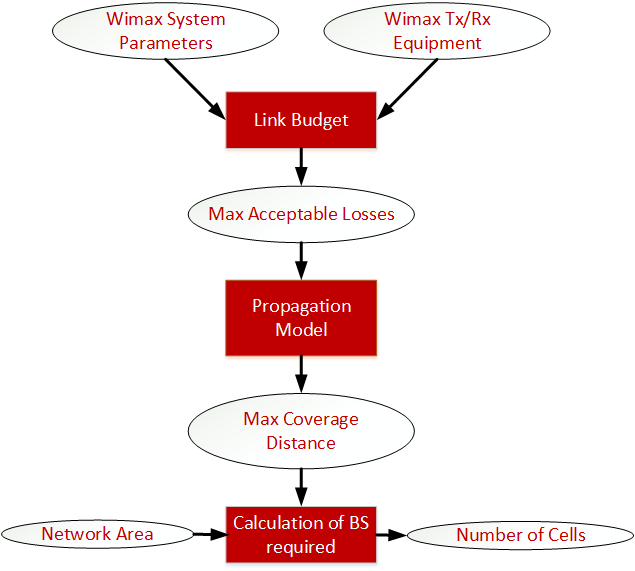 Dimensioning process
Dimensioning process
The wimax system parameters used are shown in Table 1, while the SINRmin values for different modulations and code rates in Table 2. The values of Table 2 can be found in [1].
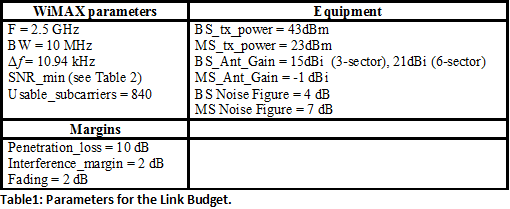

Five scenarios are examined, each employing a different antenna system.
- Scenario 1: 3-sector base stations, 2x2 MIMO In this case 3 dB are added in the EIRP due to the number of transmit antenna elements and 3 dB are subtracted by the receiver sensitivity because of the two antenna elements at the receiver side.
- Scenario 2: 3-sector base stations, 2x2 MIMO, smart antennas This scenario combines the gains of Scenario 1 with an additional 4 dB improvement at the receiver sensitivity.
- Scenario 3: 6-sector base stations, 2x2 MIMO Herein the BS_Ant_Gain is considered 21dBi instead of 15dBi, while the gains of scenario 1 are also employed.
- Scenario 4: 6-sector base stations, 2x2 MIMO, smart antennas This scenario applies the gains of Scenario 2 into a 6-sector antenna with 21dBi gain.
- Scenario 5: 3-sector base stations, 4x2 MIMO, smart antennas Finally, in this scenario the EIRP is boosted with 6 dB due to the 4 antenna elements, and the receiver sensitivity is improved by 3 dB due to the 2 antenna elements and by 4 dB due to the smart antennas.
The additional gains from the smart antennas and/or MIMO are considered in the link budget calculations so as the corresponding Max Acceptable Losses are obtained.
In order to estimate the Coverage Range the COST 231 Hata model was used. For instance, in Table 3 the DL and UL coverage ranges for Scenario 1 are shown. An indicative dimensioning for 10MHz channel bandwidth in the area of Tripolis is depicted in Figure 1. The cell radius is 170m, which corresponds to the maximum possible UL coverage range (highlighted value in Table 3). As Figure 1 depicts, Scenario 1 requires 40 cells (120 sectors).
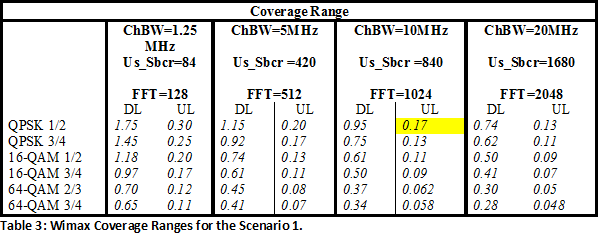
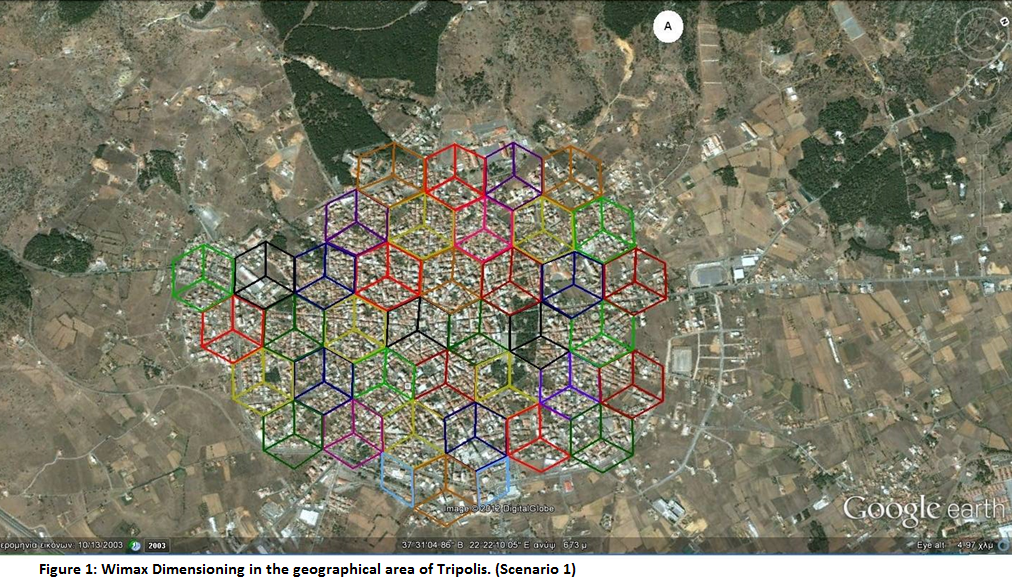
Furthermore, the dimensioning solution for each Scenario is evaluated with respect to the throughput and the cost.
For the throughput evaluation the values of Table 4 found in [2] are used along with wimax user profiles (see Table 5) found in [3]. It is considered that the 67% of users will ask for the Plus Profile, the 23% the Pro profile and the remaining 10% the Lite Profile. This assumption was followed in [3].
For the cost evaluation the approach followed in [4] was adopted.


Table 6 summarizes the dimensioning results for the 5 aforementioned Scenarios.
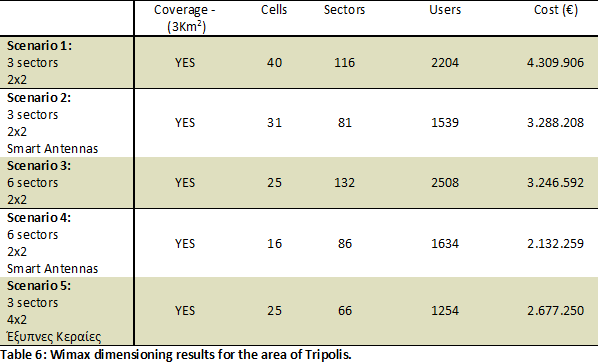
[1] Ling Bai, Analysis of the Market for WiMAX Services, M.S. Thesis, Center for Information and Communication Technologies, Technology University of Denmark, May 2007.
[2] Ioannis Clonos, IEEE 802.16 WiMAX (Network Planning and Dimensioning), BSc Thesis, Department of Science and Communications Technology, University of Peloponnese, 2008. (in greek)
3] MARAVEDIS Wireless Market Research &Analysis, (2010, November 10). Company Profile & Analysis: Packet One Networks (Malaysia)[Online]. Available: http://www.maravedis-bwa.com/
[4] Business Case Models for Fixed Broadband Wireless Access based on WiMAX Technology and the 802.16 Standard, WiMAX Forum, October 10, 2004.